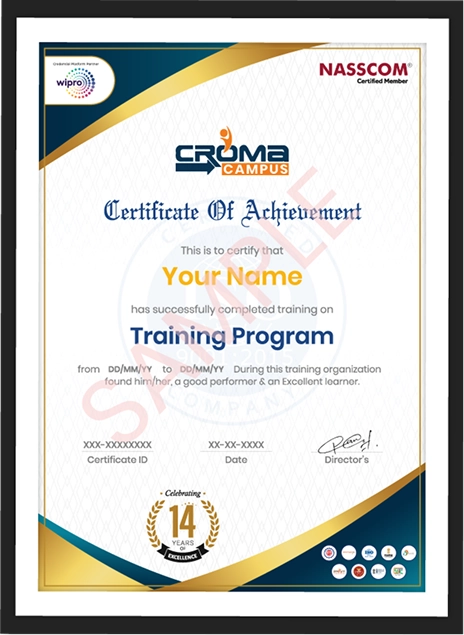Course Design By
Nasscom & Wipro
Basic information concerning this subject.
how to build a wholly functioning web application via a simplistic step from a professional trainer.
Information regarding Java server pages, servlets, and JSTL from the basics to the advance.
Imply validations on the forms, creating deploy servlets & analyzing the servlet lifecycle.
Information concerning how to develop dynamic web applications.
Java programming language, concepts related to Generics, MVC in JSP, and adding validations on form data respectively.
To be precise, you will learn every bit of this Java Online Course in detail.
Right at the beginning of your career, you will earn around Rs. 5.5 Lakhs-Rs. 6.5 Lakhs annually. Well, this structure is quite decent for starters.
Experienced candidates earn up to Rs. 12- Rs. 15.5 Lakhs a year.
By acquiring more work experience, and skills, your salary structure will get better.
You might get some international job offers as well.
By having a licit certification of Java Full Stack Development Course in Noida in hand, you will turn into a skilled Java Full Stack Developer.
Later, by obtaining more work experience in this field, you can turn into a Technical Lead or a Product Manager.
Withholding a certified accreditation in hand, you will also be offered a higher salary package than other employees.
Later, in your career, you can also turn into a freelancer, and earn even more additional income.
You will acquire in-depth information concerning HTML and CSS.
Your knowledge will get uplifted regarding JavaScript.
You will have experience working with Git, PHP, Python, Java, and Ruby.
You will grab a higher salary package.
Know some hidden facts about the Java Full Stack Training in Noida respectively.
You will get international job offers as well.
Your foremost duty will be to work accordingly with development teams and product managers to ideate software solutions.
You will also have to design client-side and server-side architecture.
Working as a Full Stack Java Developer will indulge you in the building front-end of applications through appealing visual design.
Building, and managing well-functioning databases and applications will also be counted among your main job role.
You will also have to assure responsiveness and efficiency.
Debugging, troubleshooting, and upgrading the software will also be counted as your main role.
Building features and applications with a mobile responsive design will also be counted as your main role.
You will also have to compose technical documentation.
IBM, InvokHR, HCL, EZOPS, etc. are some of the well-known companies hiring Full Stack Java Developers.
Moreover, at Croma Campus, our trainers will thoroughly help you to pass the interview by suggesting some effective tips.
You will get the opportunity to know some unknown and hidden facts about the Full Stack Java Developer Course respectively.
You will get the chance to enhance your personal skills.
Here, you will find courses belonging to numerous industries
You will also get the opportunity to know about advanced, and higher-level courses.
Our trainers will thoroughly guide you to choose a proper Java Certification as per your interest, and industrys trends.
we train you to get hired.

By registering here, I agree to Croma Campus Terms & Conditions and Privacy Policy
Course Design By

Nasscom & Wipro
Course Offered By

Croma Campus

Stories
success
inspiration


career upgrad


career upgrad


career upgrad


career upgrad
05-Jul-2025*
07-Jul-2025*
09-Jul-2025*
05-Jul-2025*
07-Jul-2025*
09-Jul-2025*

You will get certificate after
completion of program

You will get certificate after
completion of program

You will get certificate after
completion of program
in Collaboration with






Empowering Learning Through Real Experiences and Innovation

we train you to get hired.

Phone (For Voice Call):
+91-971 152 6942WhatsApp (For Call & Chat):
+91-971 152 6942Get a peek through the entire curriculum designed that ensures Placement Guidance
Course Design By


Course Offered By

Ready to streamline Your Process? Submit Your batch request today!
Yes, by acquiring adequate information, skills, and good work experience, they get a much higher salary package (6.5 LPA-17.0 LPA) than other employees.
So far, web development is referred to as a much easier one. But yes, you will have to know about the front-end, and back-end as well. Whereas the programming is a bit complex, but definitely interesting as well.
The future of a Full Stack Developer in India is expected to be really good and bright. As India is becoming digital from a small to a big business. The organizations understand the significance of having a sturdy online presence.

FOR QUERIES, FEEDBACK OR ASSISTANCE
Best of support with us
For Voice Call
+91-971 152 6942For Whatsapp Call & Chat
+91-9711526942